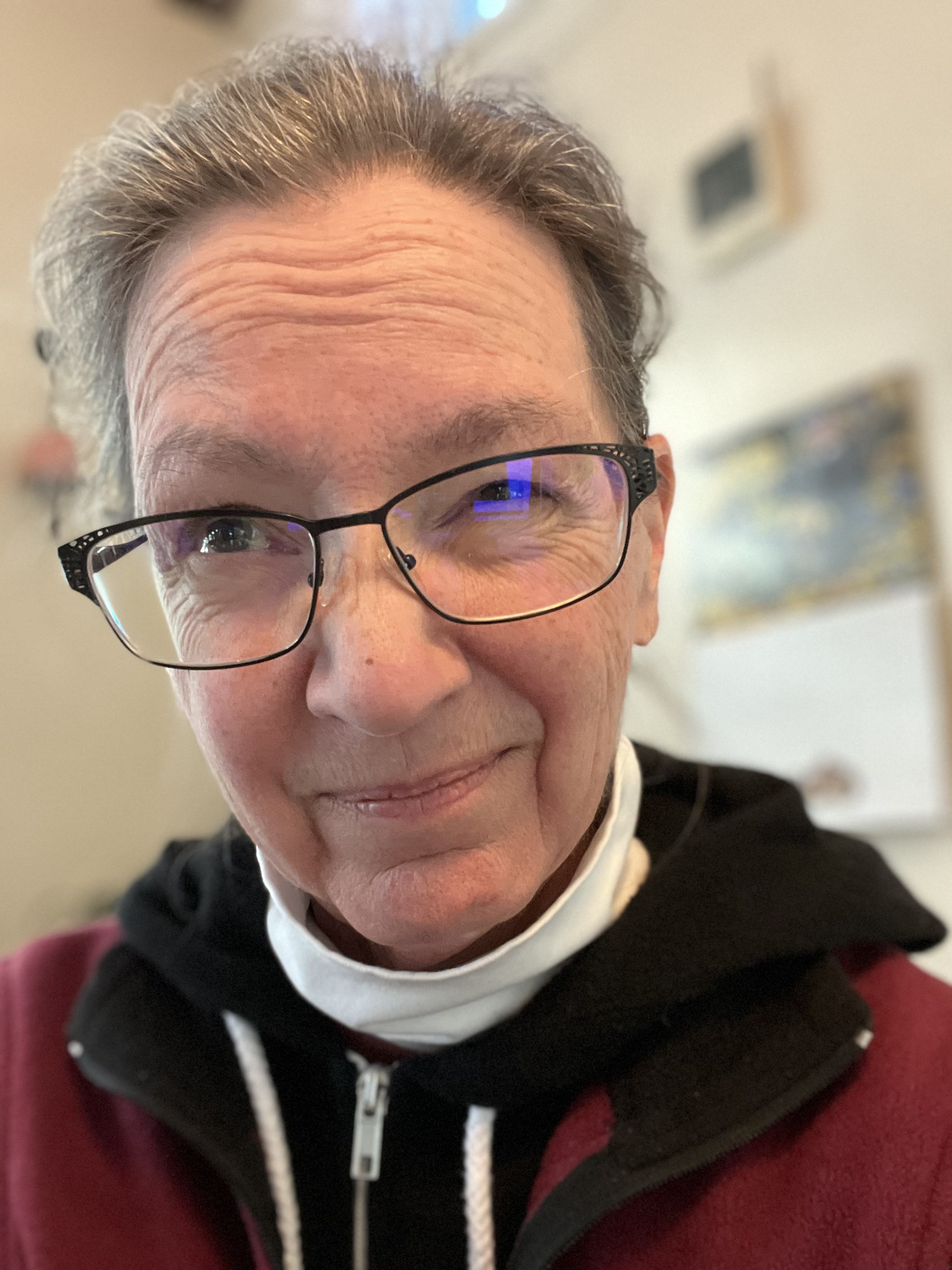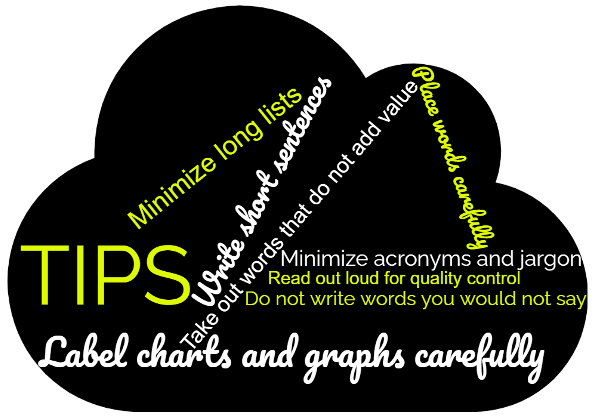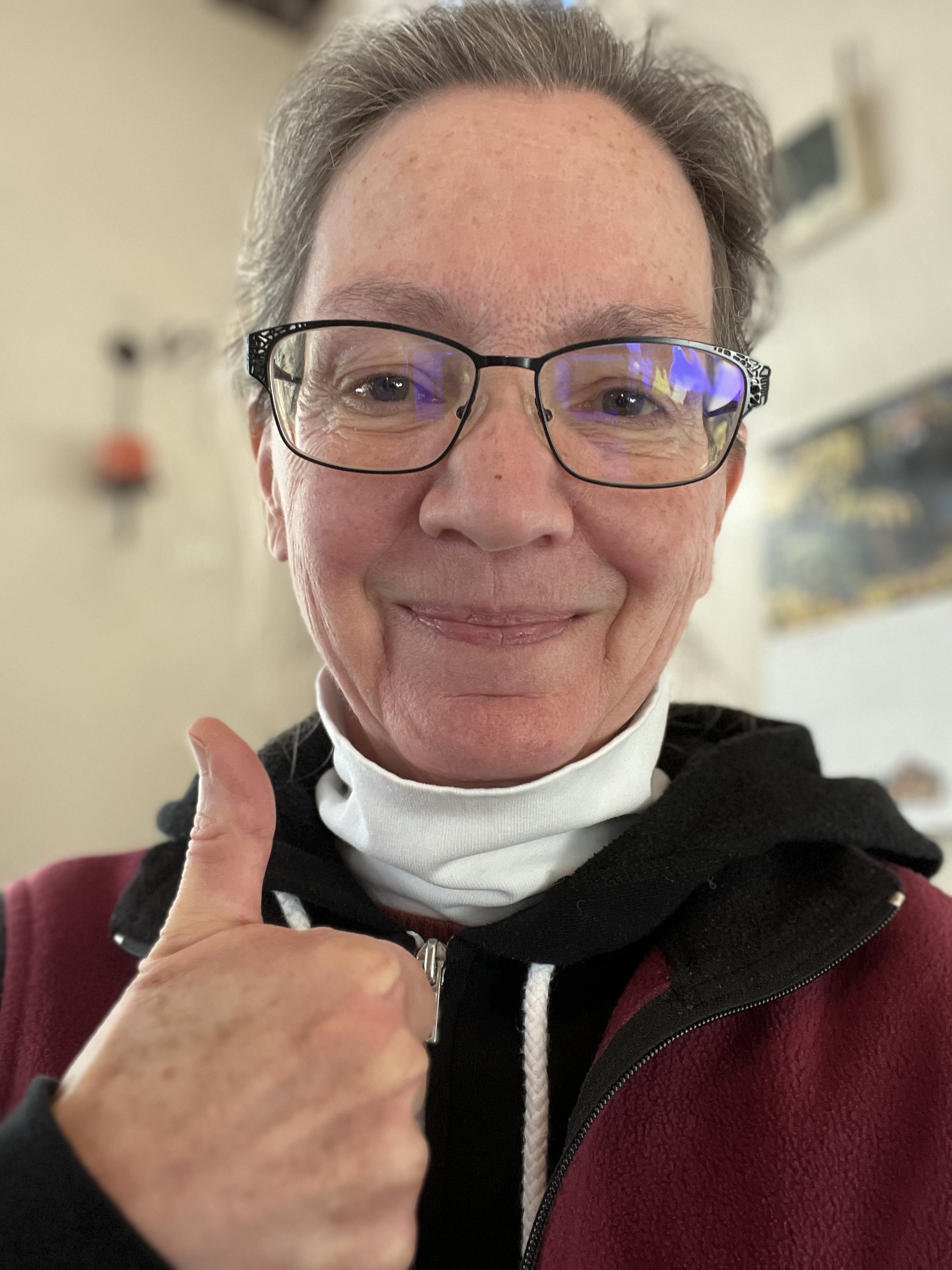Bernadette Connell - Keep it Jargon Free!
Co-authors: Erin Sanders, Jose Galvez, Marcial Garbanzo
Activity (1 hr)
Description: The people we train and
communicate with are diverse and we need to be cognizant
of that aspect. Our disciplines contain
many technical terms and long names
that are
shortened
to acronyms and jargon. In
order to reach more people across various
disciplines,
with various levels of expertise,
spoken languages, and cultures, we are re-training ourselves to use the
simplest language possible. This exercise provides
a few examples and ways we have tried to reduce confusion and simplify. Use
the
Moodle
forum for your examples. By sharing examples, we hope to seed creative ways to
deal with the next encounter
of 'complex' language.
Definition of 'Jargon'
The English Merriam-Webster Online Dictionary defines 'jargon' as:
- the technical terminology or characteristic idiom of a special activity or group ("sports jargon")
- obscure and often pretentious language marked by circumlocutions and long words ("an academic essay filled with jargon")
'Jargon' in the six official languages of the United Nations (as translated by Google Translate):
- If English is not your native language, did you need to look up the meaning of the word 'jargon'?
- What word would you use in your native language?
In this exercise we are looking for ways to promote and use the simplest language possible, with the goal of choosing words that are understandable to colleagues, trainees, friends, family, and the public.
------------------------------------------------------------------------------------------------------------Here are three reasons for using simple language:
The theme of the 14th WMO Symposium on Education and Training (virtual, November 2021) was "Education and Training in a Period of Rapid Change". A comment that came up throughout the symposium was that language often posed a barrier to learning and the sharing of training resources. A recommendation of the Regional Working Group for Regional Association VI (RA-VI) was to take tangible actions to share education and training resources. When developing resources, 'use simple language'.

2. Cross-Disciplinary Collaboration:
Have you listened to a webinar in a discipline that is outside your normal group? Do you find yourself asking the presenter to define words or acronyms? Do you search the internet for the meaning of words? Did you understand the acronyms? How easy is it to find the words or acronyms online?
3. Communicating critical weather information to partners and the public:

United Nations Goal for 2027: "Today, one third of the world's people [...] are still not covered by early warning systems... This is unacceptable, particularly with climate impacts sure to get even worse. To that end, I announce that United Nations will spearhead new action to ensure every person on Earth is protected by early warning systems within five years." -UN Secretary General, Antonio Guterres on World Meteorological Day, March 2022. WMO is responsible for leading Pillar 2: detection, observations, monitoring, analysis and forecasting of hazards. This leads to Pillar 3: warning dissemination and communication. We can help ensure that the warning information is clear and usable through simple language.
------------------------------------------------------------------------------------------------------------Exercise 1
 Please note that this exercise is not about testing your knowledge of a meteorological feature. It is about checking whether a word is suitable to use for a general audience.
Please note that this exercise is not about testing your knowledge of a meteorological feature. It is about checking whether a word is suitable to use for a general audience.
Does this satellite imagery loop show an example of a haboob?
A). YesB). No
C). I do not know what a haboob is.
If you were posting the image shown on the left to social media, how would you describe it? Would you add labels?
------------------------------------------------------------------------------------------------------------Exercise 2
How can we encourage colleagues to use simpler language?
- Point out that the WMO Education and Training Programme recommends this practice (1) above.
- Link it to being able to communicate a clear message to the public, especially for hazardous events (3) above.
- Encourage our leadership to promote it with a good example from the leadership of a trusted partner.
- For instance, this email from the National Environmental Satellite, Data, and Information Service (NESDIS) was forwarded by the Director of the Cooperative Institute for Research in the Atmosphere (CIRA).
- Set a good example by using simple language ourselves.

What other ways can you think of to encourage colleagues to use simpler language?
The US government refers to 'simple' language as 'plain' language. Here is a great resource for using plain language.
